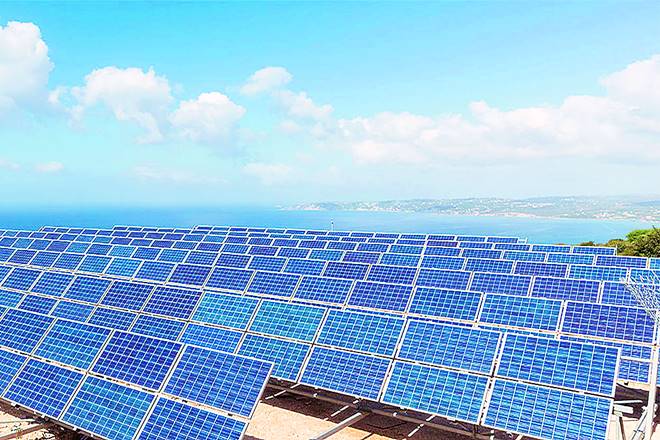By Gagan Sidhu
Despite the additional overhangs of safeguard duty, GST and a depreciated currency, the first renewable auctions of 2019 have produced PPA tariffs that are almost on a par with the record lows seen in 2017 and 2018. Low renewable tariffs are not unique to India. This trend becomes irreversible wherever reverse auction replaces feed-in tariff as a method of price discovery. How will capital be raised under this new normal? Evaluating the experience of various classes of capital providers to the sector holds the key.
Given its history of extending credit to renewables, let’s consider the example of IREDA as a proxy for project lenders. The following figures are based on a 180-day NPA classification (versus 90 days for banks), but it is remarkable that IREDA’s `3,830cr solar loan book has zero gross NPAs (September 2017). Its Rs 5,226cr wind loan book is not far behind, with NPAs of only 1.3%. Barring projects exposed to habitually errant off-takers, evidence from other lenders is also promising. Moreover, many renewable project loans are moving into A credit-rating territory, placing them within striking distance of the domestic bond market with its pricing benefits. Additionally, attributing a higher probability of default to lower PPA tariffs in a business with practically zero variable costs is debatable. It is more likely to result in downsized loans and heightened lender monitoring of capital expenditure rather than heightened default risk.
If lenders are getting repaid, how is project equity faring? The principal risks to project equity are curtailment of power generation, and delays in payments once it’s generated. The former risk manifests itself in the form of lower than estimated or eroding plant load factors (PLF), while ballooning receivables are indicative of the latter. Interestingly, an examination of a cross section of developer’s points to PLF’s matching estimates or holding steady year on year in an overwhelming number of cases. The receivables situation also doesn’t appear to be deteriorating materially. So what explains the outpouring of concern among developers each time PPA tariffs fall? Digging deeper into the origins of project equity provides answers.
Project equity can be traced to funding raised at parent company level as common equity, debentures, or convertible debt, often a mix of all three. The latter two carry an explicit cost, in the form of a coupon for debentures, and in the form of dilution on common equity shareholders for the convertible. On the other hand, while common equity carries no explicit cost, it carries implicit return expectations. What all three sources share is an assumed level of returns expected upon their investment into projects. So what happens when funding is priced and raised, but PPA tariffs decline rapidly and continuously, outpacing even declines in capital expenditure? Seniority ensures the protection of economics for debenture and convertible holders. However, common equity shareholders pay the price as the assumed positive carry on debentures begins evaporating and conversion starts looking prohibitively dilutive. Even in cases with predominantly common equity based parent capital structures, cash generated turns out to be a fraction of what was expected.
There are a couple of options available to tackle this predicament. Ceasing further investment and winding up capital structures via sales of underlying portfolios is one option. The market has witnessed several such transactions, with some observers misinterpreting them as permanent exits. In reality, many of these sellers will return with fresh capital stacks more attuned to actual risk and return realities. This option has an added advantage. Beyond a point, it is unwieldy to achieve a balance between successive generations of capital with recourse to a common pool of project level cash flow streams with incrementally diminishing return profiles.
Pressing for higher PPA tariffs by citing system wide risk is another option. However, this can be counterproductive if they do not trend upwards in response. After all, if risk supposedly increases with each progressive decline, a refinance exposed to cash flows generated from projects with stubbornly low tariffs should be forthcoming on even more expensive terms than the original financing. This can also have a contagion effect, unfairly punishing shareholders of other developers. Finally, the system wide risk argument doesn’t seem to hold good as it appears just one class of capital, namely parent level common equity, is paying the price for a misjudgment in trajectory of PPA tariff decline.
This brings us to the subject of capital required to achieve India’s target of 500GW of renewables capacity within the next decade. The first generation of capital was raised without the benefit of much operating history, resulting in an overestimation of project level risk and return. Negligible barriers to entry then came into play and ensured tariffs hit one low after another. In contrast, the next generation has the advantage of data points being generated by hundreds of operating projects. Effectively interpreting this data and communicating it to investors is what will drive future capital raises. And if PPA tariffs remain low in the bargain, it may not be such a bad thing because anticipating and delivering moderate project level returns can result in a far better value creation outcome for common equity shareholders than anticipating high returns, but delivering only moderate ones.


